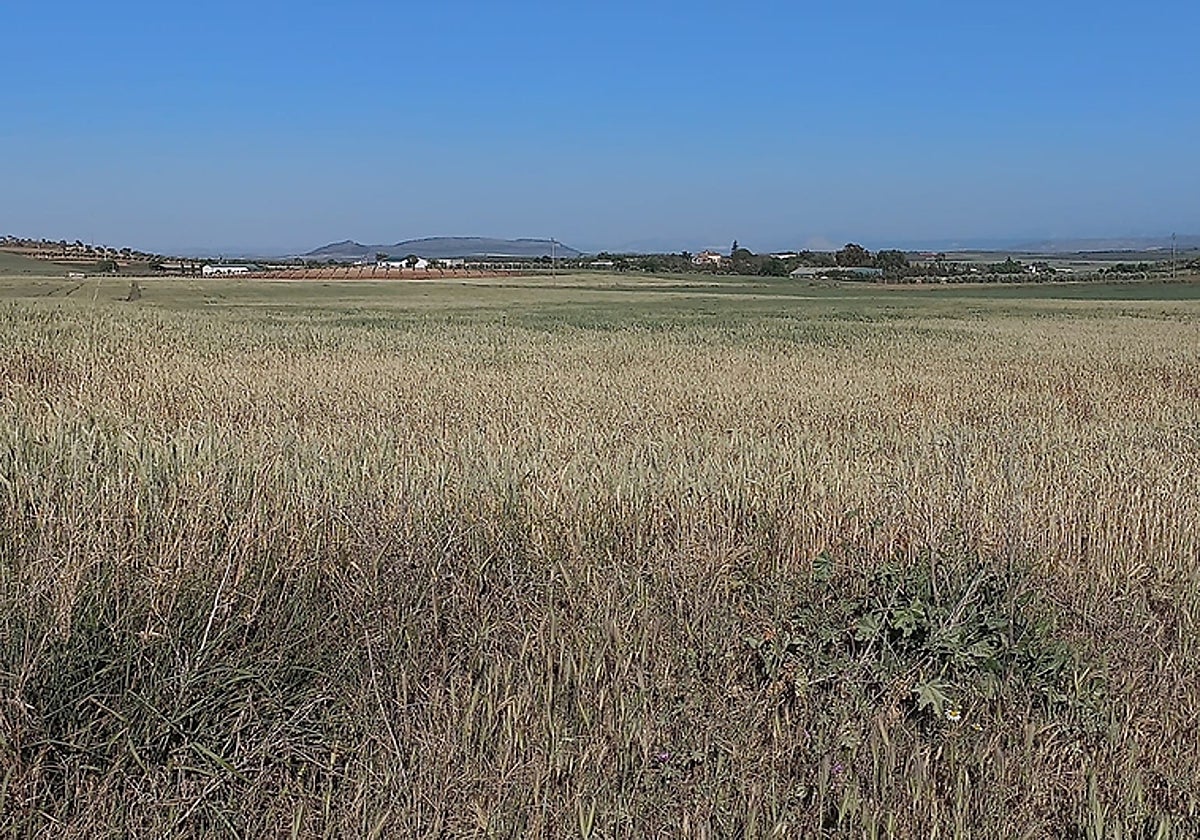Drought threatens up to 60 per cent of this year's cereal crop in Malaga province
Agriculture ·
The sector already considers some crops to be irrecoverable and is forecasting the worst harvest in decadesMatías Stuber
Malaga
Miércoles, 12 de abril 2023, 12:09
The drought situation is driving farmers to despair in Malaga province. All crops are being severely hit. The olive harvesting season has been catastrophic. And now the future looks grim for cereals.
"In the countryside, spring is everything. We haven't had any rain, nor is it expected," said Benito Avilés, the president of the Campillos Cooperative. He estimates that "up to 60 per cent of the crop" could be lost compared to 2022. Avilés also predicts that the harvest for the 2023-2024 season is set to be the lowest in recent decades, as also mooted by the main agricultural associations, ASAJA and UPA.
The province farms some 38,000 hectares of cereals such as durum wheat, soft wheat, barley and oats. The areas where these crops are most concentrated are in Teba, Almargen, Ardales, Campillos, the area north of Antequera, the Serranía de Ronda and the Guadalhorce Valley. In 2022, according to ASAJA, the cereal harvest, with a production of 72,520 tonnes, was worth some 47 million euros.
Critical phases
There are several critical phases for the cereal crop. The most important coincides with spring and the need for rain. With no water in sight, farmers are seeing the clock ticking down and, as a result, forecasts are narrowing. The secretary general of UPA, Francisco Moscoso, said that the province is heading for an unprecedented situation. "For example, in the Serranía de Ronda, there is no irrigation of any kind. These are cooler lands and good for cereals. But the problem is that it doesn't rain. If it doesn't rain between now and the end of April, we will have a total cereal disaster," Moscoso said.
The vast majority of the cereal grown in Malaga is destined for the manufacture of animal feed. According to the experts consulted, 10 per cent is used for human food (soft wheat). Another small part of the barley production is used for beer production.
If most of the cereal harvested in Malaga province goes to feed production, the next in the chain to receive bad news are the livestock farmers. "The price was already very high because of the pandemic and the war in Ukraine. With such a poor harvest expected, it is clear that there is not going to be a relaxation in prices," Juan Carlos Rodríguez, a Dcoop director, said.
